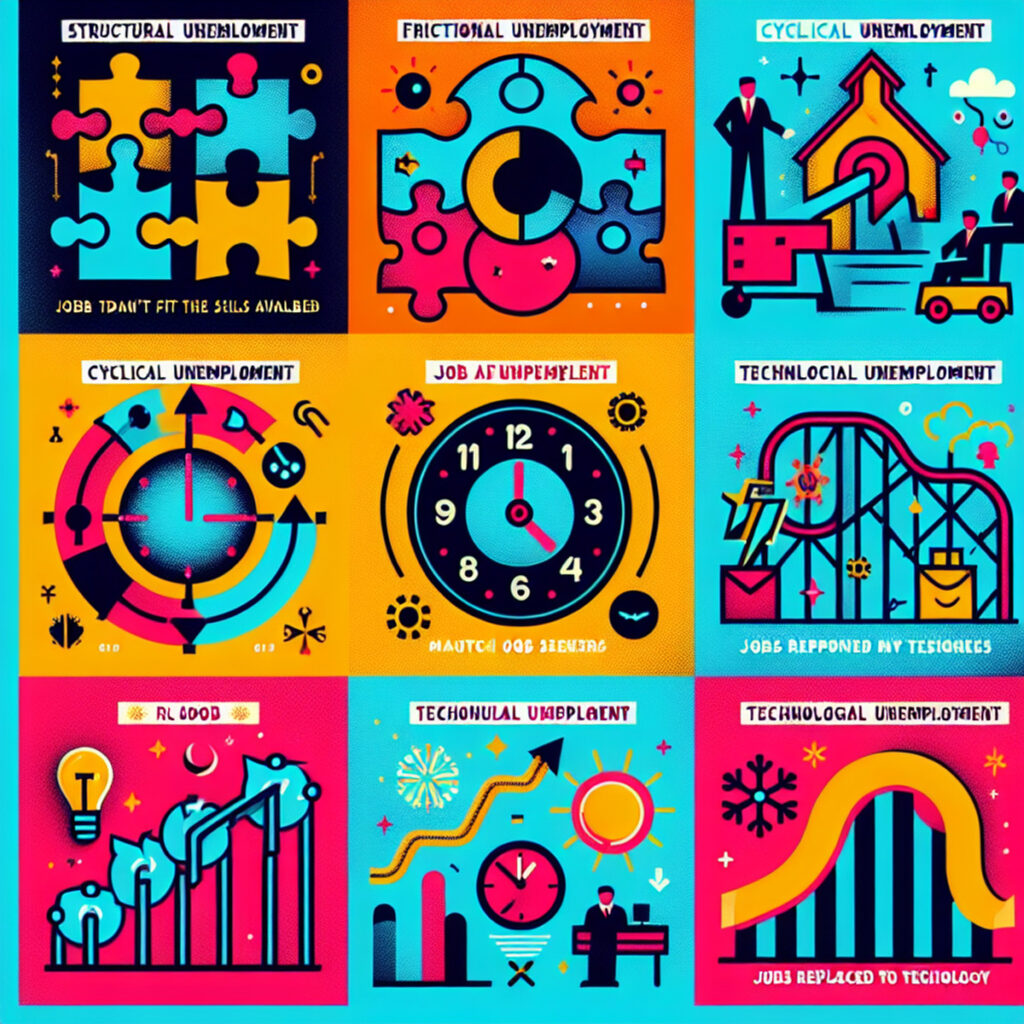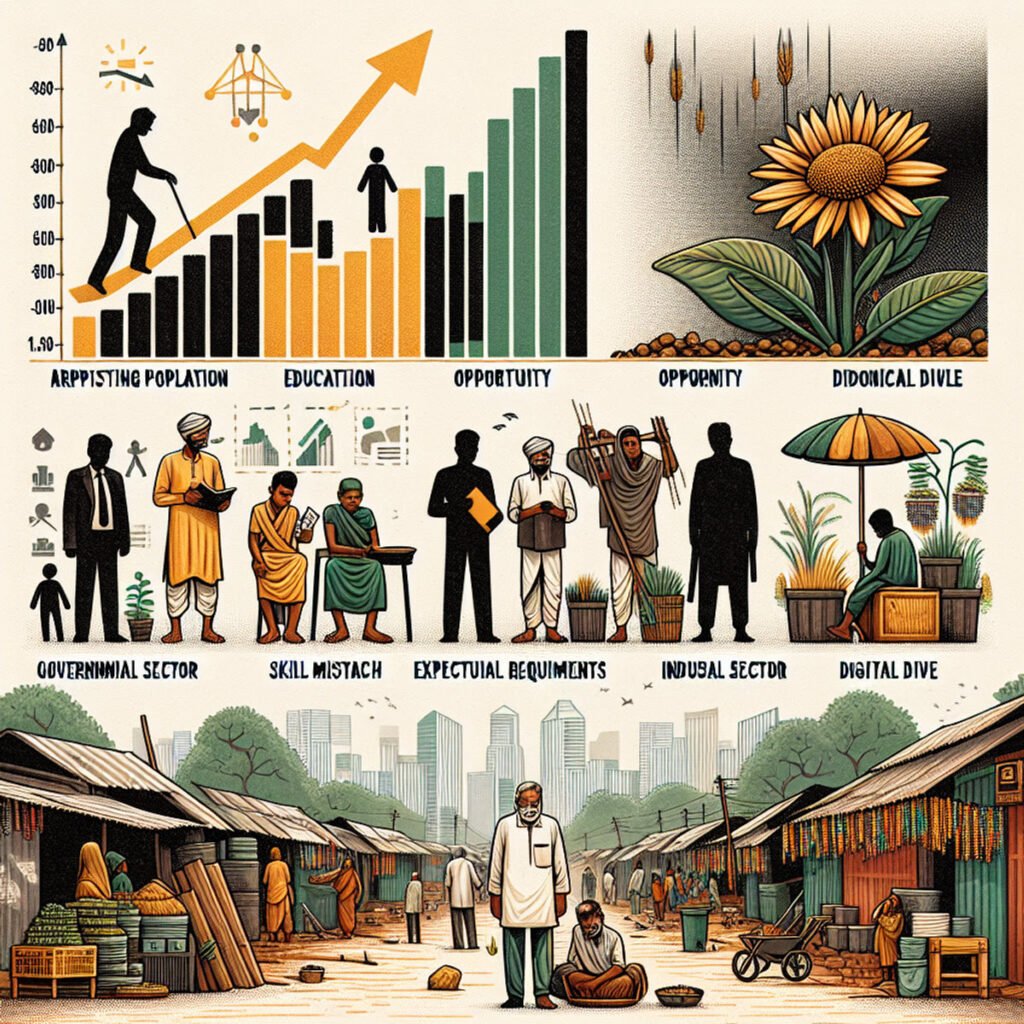Problem of Unemployment in India
Unemployment poses a significant challenge in India, defined by economists like Prof. Pigou as a scenario where individuals are willing to work at the prevailing wage rate but struggle to secure employment. In simpler terms, someone is deemed unemployed if they lack a job despite the desire to work. This predicament arises when numerous capable individuals are ready to work at existing wages but encounter obstacles in finding employment. When gauging unemployment, the focus lies on individuals fit for work and willing to engage at prevailing wages.
The “Labor F Approach” perceives workers as individual units, gauging employment in Standard Person Years (SPY). A ‘standard person year’ involves 8 hours of work a day for 273 days. Individuals meeting this criterion for at least 273 days a year are not considered unemployed. Explore the nuances of the unemployment issue in India, where willingness to work and the availability of jobs intertwine in a complex economic landscape.
Problem of Unemployment in India
Read More: Problem of Poverty in India

Nature and Types of Unemployment
Nature and Types of Unemployment
Nature and Types of Unemployment in India
Explore the intricate facets of unemployment in India, where diverse factors such as population growth, education systems, and technological shifts contribute to various forms of joblessness. Tackling these issues requires a nuanced understanding of the types:
- Open Unemployment: This occurs when individuals, despite having the necessary qualifications, remain jobless throughout the year due to a lack of available opportunities.
- Underemployment: Underemployment has two dimensions. It happens when a worker receives fewer work hours than desired or engages in a job below their skill level.
- Disguised Unemployment: More workers participate in a task than necessary, resulting in minimal or zero productivity.
- Seasonal Unemployment: Common in agriculture and seasonal industries, individuals find work during specific seasons but face unemployment during others.
- Frictional Unemployment: Temporary unemployment arising from delays in the matching process between job seekers and employers during relocations or job changes.
- Structural Unemployment: Caused by technological changes or shifts in product demand, leading to a mismatch between available jobs and workers’ skills.
- Educated Unemployment: Despite educational qualifications, individuals struggle to find jobs matching their skills due to a surge in the educated population surpassing job growth.
- Cyclical Unemployment: Tied to economic cycles, this type spikes during recessions when economic activities decrease, leading to job losses.
- Industrial Unemployment: Driven by urbanization and population growth, this type results from insufficient job opportunities in urban industries, exacerbated by technological shifts limiting employment expansion.
Nature and Types of Unemployment
Understanding these nuances is essential for crafting targeted strategies to address the diverse challenges posed by unemployment in different sectors and contexts in India.
Nature and Types of Unemployment
Nature and Types of Unemployment
Read More: Main Features of the Indian Economy

Causes of the Unemployment Problem in India
Causes of Unemployment in India
Uncover the root causes contributing to the unemployment challenge in India, shaping the narrative for effective solutions:
Causes of the Unemployment Problem in India
- Rapid Population Growth: India contends with relentless population expansion, intensifying the gap between available jobs and the soaring demand for employment opportunities.
- Mechanization: Technological advancements, including computers and automation, have diminished the necessity for human labor. Sectors like banking and agriculture witness job losses due to increased mechanization.
- Decline of Small Industries: Favoritism towards large-scale industries adversely impacts small and cottage enterprises, leaving countless artisans unemployed. Seasonal fluctuations in certain industries exacerbate this predicament.
- Agricultural Seasonality: Despite being a primary occupation, agriculture faces challenges due to seasonality and insufficient irrigation facilities, resulting in prolonged unemployment for farmers.
- Deficient Education System: The prevailing education system lacks practical business knowledge, leaving graduates ill-prepared for entrepreneurship. A focus on seeking employment over fostering self-employment compounds the issue.
- Lack of National Employment Policy: The absence of a comprehensive national employment policy leads to an uncoordinated approach in tackling unemployment. Inadequate manpower planning creates a misalignment between education, industry needs, and available job opportunities.
- Low Saving and Investment: India grapples with a capital deficit, and existing capital remains underutilized. Inadequate savings impede capital formation, decelerating industrialization, economic activities, and infrastructure development, thereby limiting job creation.
Causes of the Unemployment Problem in India
Understanding these core issues is pivotal for crafting targeted interventions that address the multifaceted challenges of unemployment in India.
Causes of the Unemployment Problem in India
Causes of Unemployment in India
Causes of Unemployment in India
Read More: Economic Planning in India

Suggestions to Solve the Unemployment Problem
Suggestions to Solve the Unemployment Problem
1. Educational Reforms
- Skill-Centric Education: Align educational curricula with industry needs to equip students with practical skills and enhance employability.
- Promote Entrepreneurship: Encourage entrepreneurial education to foster a culture of innovation and self-employment.
Suggestions to Solve the Unemployment Problem
2. Promoting Vocational Training
- Skill Development Programs: Establish and expand vocational training programs to bridge the gap between academic qualifications and practical skills.
- Industry-Academia Collaboration: Foster collaboration between educational institutions and industries to ensure that training programs align with market requirements.
Suggestions to Solve the Unemployment Problem
3. Encouraging Small and Medium Enterprises
- Financial Support: Provide financial incentives and support for the establishment and growth of SMEs, which are crucial for job creation.
- Streamlined Regulations: Simplify bureaucratic processes and regulations to make it easier for small businesses to start and operate.
Suggestions to Solve the Unemployment Problem
4. Infrastructure Development
- Investment in Infrastructure: Large-scale infrastructure projects can stimulate economic activity and create jobs in construction and related sectors.
- Rural Development: Targeted development in rural areas can generate employment opportunities and discourage mass migration to urban centers.
5. Government Employment Schemes
- Public Works Programs: Implement public works projects to address immediate employment needs while enhancing community infrastructure.
- Subsidized Employment: Introduce schemes that subsidize employee salaries, incentivizing businesses to hire more workers.
6. Encouraging Innovation and Technology
- Tech Training Programs: Invest in programs that train individuals in emerging technologies to prepare them for roles in the digital economy.
- Support for Startups: Foster a supportive environment for startups and innovation hubs to create jobs in cutting-edge industries.
Suggestions to Solve the Unemployment Problem
7. Labor Market Flexibility
- Flexible Employment Models: Encourage flexible work arrangements, such as part-time or remote work, to match the changing dynamics of the job market.
- Skills Transferability: Facilitate the transferability of skills between industries to adapt to changing demands.
8. International Cooperation
- Skill Recognition: Collaborate with other nations to standardize and recognize skills, facilitating international employment opportunities for workers.
- Global Job Placement: Explore partnerships that enable workers to seek employment globally, matching skills with global demand.
9. Continuous Monitoring and Adaptation
- Data-Driven Policies: Utilize data and analytics to monitor employment trends and adjust policies accordingly.
- Agile Policy Framework: Maintain a dynamic policy framework that can adapt to changing economic conditions and technological advancements.
Suggestions to Solve the Unemployment Problem
Read More: Problem of Unemployment in India
Conclusion
Problem of Unemployment in India
Problem of Unemployment in India
In conclusion, tackling the intricate issue of unemployment in India necessitates a united effort and strategic initiatives. By prioritizing skill development, supporting entrepreneurship, fostering innovation, and implementing adaptable policies, we can pave the way for a more resilient and employment-rich future. It’s not just a challenge; it’s an opportunity for transformative change that demands our collective commitment and innovative solutions.
Problem of Unemployment in India


[…] Read More: Problem of Unemployment in India […]